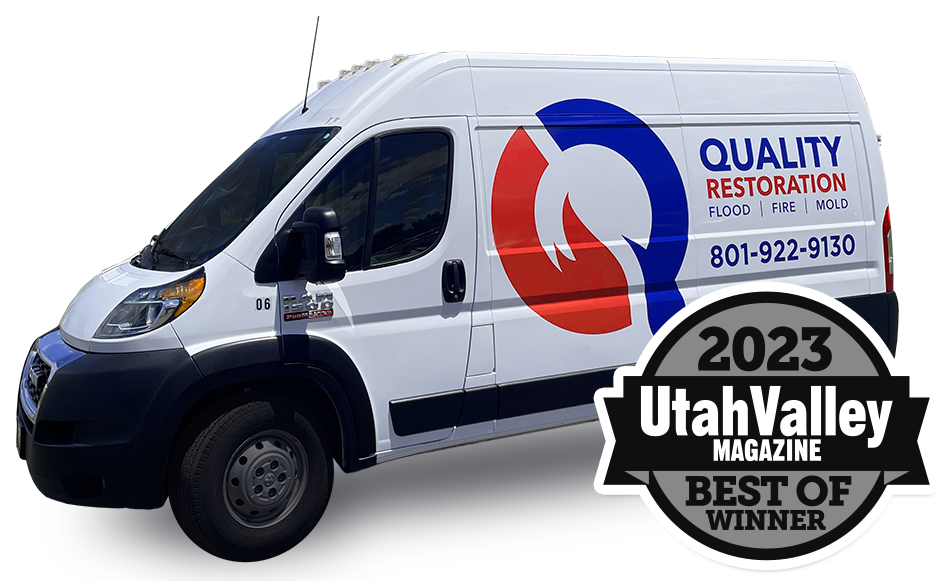When faced with water damage in your home, it is crucial to take immediate action to prevent further damage and ensure a successful restoration process. However, there are common mistakes that many homeowners make during water damage cleanup that can lead to costly errors and complications. In this article, we will discuss the important steps you should take to avoid these mistakes and effectively restore your property.
Key Takeaways:
- Assess the extent of the water damage and prioritize safety before starting the cleanup process.
- Identify and stop the source of water leakage to prevent further damage.
- Act quickly to remove standing water and initiate the drying process to prevent mold growth and structural damage.
- Avoid using electrical appliances in wet areas to prevent electrical hazards.
- Thoroughly clean and disinfect affected areas to prevent the growth of mold and harmful microorganisms.
Assess the Situation and Ensure Safety
Before you begin the water damage cleanup process, it is crucial to assess the extent of the damage and prioritize safety. By following the necessary steps to evaluate the situation and taking appropriate safety precautions, you can protect yourself and your belongings.
- Inspect the affected area: Start by carefully examining the area that has been impacted by water damage. Look for visible signs of water intrusion, such as water stains, dampness, or pooling water. Take note of the areas that require immediate attention.
- Identify potential hazards: During the inspection, be mindful of any potential safety hazards. This could include electrical outlets or appliances submerged in water, structural damage, or the presence of hazardous substances. If you identify any hazards, take the necessary precautions before proceeding with the cleanup.
- Ensure proper ventilation: Proper ventilation is essential to minimize mold growth and aid in the drying process. Open windows and use fans or dehumidifiers to increase airflow and remove excess moisture from the area.
- Use personal protective equipment (PPE): When dealing with water damage, it is important to protect yourself from potential health risks. Wear gloves, goggles, and a mask to prevent contact with contaminated water, mold, or other harmful substances.
By thoroughly assessing the situation and following necessary safety precautions, you can create a safer environment for the water damage cleanup process.
Stop the water source immediately
When dealing with water damage, one of the first and most crucial steps is to identify and shut off the source of water leakage. By stopping the flow of water, you can prevent any further damage to your property and minimize the extent of the existing damage.
To stop the water source, follow these steps:
- Identify the water source: Inspect your home to locate the exact point where the water is entering. This could be a burst pipe, leaking faucet, or malfunctioning appliance.
- Shut off the water: Once you have identified the source, locate the water shut-off valve or the valve specific to the area experiencing the leak. Turn it clockwise until it is fully closed to stop the flow of water. If you can’t find the specific valve, shut off the main water supply to your home.
By taking prompt action to stop the water source, you can effectively prevent further damage and minimize the need for extensive repairs. Remember, time is of the essence when it comes to water damage, so act swiftly to protect your property.
Steps to Stop the Water Source
| Step | Description |
|---|---|
| 1 | Identify the water source |
| 2 | Locate the shut-off valve |
| 3 | Turn the valve clockwise to shut off the water |
Do not delay water removal and drying
When dealing with water damage, every minute counts. Promptly removing standing water and initiating the drying process is crucial to prevent further damage and minimize the risk of mold growth and structural issues. The longer water sits, the greater the damage and the more challenging the restoration process becomes. To ensure an effective cleanup and minimize the long-term impact, follow these important steps:
- Assess the extent of the water damage: Before starting the water removal process, evaluate the affected areas to determine the severity of the damage. This will help you plan your approach and prioritize the areas that require immediate attention.
- Extract water using appropriate equipment: Invest in or rent high-quality water extraction tools such as wet/dry vacuums or submersible pumps to remove standing water efficiently. Focus on removing as much water as possible from all affected areas, including carpets, furniture, and flooring.
- Dispose of extracted water safely: Make sure to dispose of the extracted water properly to avoid contaminating other areas of your home. Use designated disposal containers or contact your local waste management facility for guidance on safe disposal methods.
- Initiate the drying process: After removing the water, it is essential to start the drying process immediately. Open windows and doors, use fans, and consider renting dehumidifiers to accelerate the drying time. Remove any wet materials such as carpets, rugs, and upholstery that cannot be effectively dried in place.
- Monitor the drying progress: Regularly check the moisture levels in the affected areas using moisture meters or hygrometers. This will help you ensure that the drying process is effective and identify any hidden pockets of moisture that may require additional attention.
By promptly removing water and initiating the drying process, you can prevent further damage to your property and minimize the risk of mold growth and structural issues. Remember, time is of the essence when it comes to water damage cleanup, so act quickly to minimize the impact on your home.
Avoid using electrical appliances in wet areas
When dealing with water damage cleanup, it’s crucial to prioritize safety and be aware of potential electrical hazards. Water and electricity do not mix well and can pose serious risks if not handled properly. Therefore, it is essential to avoid using electrical appliances in wet areas during the cleanup process.
Exposing electrical appliances to water can lead to electrocution and cause further damage to the electrical systems in your home. To prevent accidents and ensure your safety, follow these important guidelines:
- Turn off the power: Before entering any wet areas, make sure to turn off the power supply to prevent any electrical currents flowing through the affected areas.
- Unplug appliances: Disconnect any electrical appliances, such as fans, heaters, or dehumidifiers, from power sources immediately to eliminate the risk of electric shock.
- Keep cords dry: Ensure that electrical cords and plugs remain dry throughout the cleanup process. Avoid dragging cords through wet areas and keep them elevated to prevent water damage.
- Use battery-powered devices: Instead of relying on electrical appliances, consider using battery-powered devices during the cleanup process. This eliminates the risk of electricity coming into contact with water entirely.
By following these precautions and avoiding the use of electrical appliances in wet areas, you can minimize the risk of electrical hazards and protect yourself from potential accidents during the water damage cleanup process.
| Electrical Hazards | Consequences |
|---|---|
| Electrocution | Severe injury or even death |
| Electrical system damage | Compromised electrical circuits, potential fires |
| Appliance malfunction | Permanent damage, safety hazards when used again |
Don’t neglect thorough cleaning and disinfection
When it comes to water damage restoration, cleaning and disinfecting affected areas should not be overlooked. After addressing the initial concerns such as assessing the situation and stopping the water source, thorough cleaning and disinfection are crucial steps to prevent further damage and ensure a safe living environment.
Cleaning water damage involves the removal of debris, dirt, and any residual moisture that may remain after the water has been extracted. Begin by wearing protective gear such as gloves and a mask to avoid exposure to potentially harmful contaminants.
Start by removing any visible dirt or debris using a wet/dry vacuum or a mop. Be sure to clean not only the floors but also walls, furniture, and other surfaces that have been affected by the water. Use mild soap or detergent mixed with water to scrub the surfaces gently, paying extra attention to crevices and hard-to-reach areas that may harbor moisture.
Disinfecting the areas is equally important to eliminate any lingering bacteria, viruses, or mold spores that may have been introduced by the water damage. Choose a disinfectant that is specifically designed to kill microorganisms and follow the instructions on the product label carefully.
Apply the disinfectant solution to the surfaces and allow it to sit for the recommended contact time. Use a cloth or sponge to scrub the surfaces, ensuring thorough coverage. Pay close attention to high-touch areas such as doorknobs, light switches, and countertops.
After cleaning and disinfecting, allow the areas to dry completely. Proper ventilation and the use of fans or dehumidifiers can help expedite the drying process. It is essential to ensure that no moisture remains, as lingering dampness can promote the growth of mold and other harmful microorganisms.
By not neglecting thorough cleaning and disinfection, you can effectively remove contaminants and prevent the growth of mold and other harmful microorganisms. Taking these steps will not only protect your property but also safeguard the health and well-being of you and your loved ones.
Conclusion
By following these crucial steps, you can ensure a successful water damage cleanup process and minimize potential damage to your home. First and foremost, assess the situation and prioritize safety by taking necessary precautions. This includes shutting off the water source to prevent any further damage.
Time is of the essence, so don’t delay in removing standing water and initiating the drying process. This will help prevent mold growth, structural damage, and other long-term issues associated with prolonged exposure to moisture. Remember to avoid using electrical appliances in wet areas to prevent electrical hazards.
Thorough cleaning and disinfection are essential to prevent the growth of mold and harmful microorganisms. Make sure to clean and disinfect affected areas meticulously, paying attention to various surfaces and materials. By following these guidelines and avoiding common mistakes, you can confidently navigate the water damage cleanup process and restore your home safely.
FAQ
What are the common mistakes to avoid when cleaning up water damage?
Some common mistakes to avoid when cleaning up water damage include neglecting to assess the situation and prioritize safety, not stopping the water source immediately, delaying water removal and drying, using electrical appliances in wet areas, and neglecting thorough cleaning and disinfection.
How should I assess the situation and ensure safety during water damage cleanup?
To assess the situation and ensure safety during water damage cleanup, start by evaluating the extent of the damage, checking for potential hazards such as structural instability or electrical issues, and wearing appropriate personal protective equipment. It is important to err on the side of caution and seek professional help if needed.
What should I do to stop the water source immediately?
The first step to stop the water source immediately is to identify the location of the leak or water flow. Once identified, shut off the water supply to that area or the entire property if necessary. If you are unsure or unable to locate the water source, it is recommended to contact a professional plumber for assistance.
Why is it crucial to not delay water removal and drying?
Delaying water removal and drying after water damage can lead to several issues, including mold growth, structural damage, and degradation of materials. Time is of the essence as mold can start to grow within 24 to 48 hours. Quick water extraction and effective drying can prevent these problems and minimize the extent of damage to your property.
Can I use electrical appliances in wet areas during water damage cleanup?
No, it is crucial to avoid using electrical appliances in wet areas during water damage cleanup. Water and electricity can create a hazardous combination, increasing the risk of electrocution and damage to the electrical systems. Ensure that the affected areas are completely dry before using any electrical devices.
How important is thorough cleaning and disinfection during water damage cleanup?
Thorough cleaning and disinfection are vital steps in water damage cleanup. After removing standing water, it is essential to clean and disinfect affected surfaces and materials to prevent the growth of mold and other harmful microorganisms. Use appropriate cleaning products and techniques recommended for the specific materials to ensure effective disinfection.
What is the importance of following these guidelines for water damage cleanup?
By following these guidelines for water damage cleanup, you can ensure a safe and efficient restoration process while avoiding costly mistakes. Assessing the situation, stopping the water source, promptly removing water, avoiding electrical hazards, and thoroughly cleaning and disinfecting affected areas are essential steps to minimize damage and prevent future issues.




















